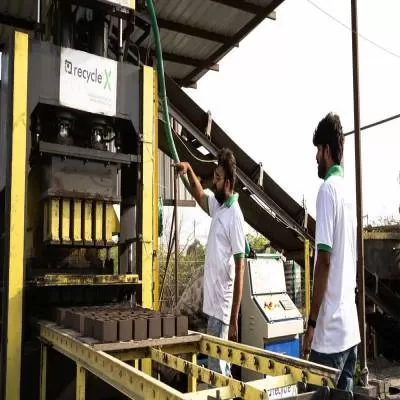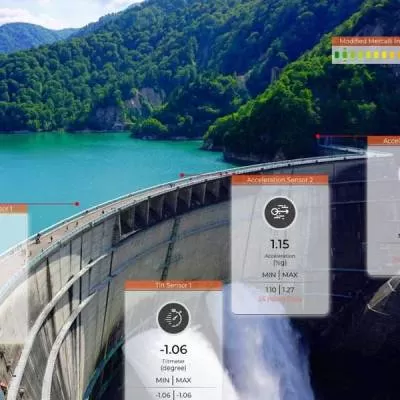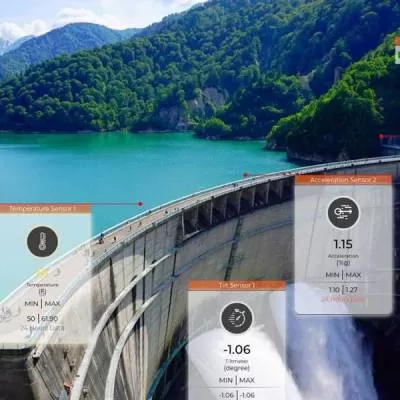- Home
- Technology
- Get IT Right!
Get IT Right!
Satish Pendse, President, Highbar Technologies, writes on ways to manage construction equipment intelligently with Information Technology (IT).
Construction equipment is a critical resource in a construction project. Non-availability, delay, breakdown or suboptimal performance of equipment can prove to be costly and disruptive for the project. In this article, we will discuss how IT can help optimise the utilisation of equipment; track and improve productivity and performance; extend equipment life through effective maintenance; and provide real-time dashboards for informative decision making.
Optimum utilisation of equipment
At the project level, a world-class ERP like SAP can get information for particular equipment on various parameters such as working time, idle time, productive time, non-productive time and the overall utilisation of the equipment. Based on this information, an analysis of actual utilisation vs budgeted utilisation can be carried out and corrective measures taken to optimise utilisation of equipment for the project. Software also provides visibility of the equipment across the organisation in terms of availability and utilisation. This also helps in optimal allocation of equipment across projects.
Improved productivity
With the help of a world-class ERP, actual throughput of equipment can be tracked and an analysis of actual productivity vs budgeted vs rated capacity can be carried out, facilitating corrective action as and when necessary. For instance, SAP allows tracking equipment performance on various parameters such as POL consumption, electricity, spare parts, sundry expenses (for example, expenses towards foundation of crushing plant), etc.
Based on these inputs, we also get to know about various performance parameters such as cost per hour, production per hour, etc, which can be benchmarked against standard equipment norms to gauge the performance of the equipment, and corrective action can be taken to enhance performance. At times, it is important to check the productivity of the entire chain of equipment. For example, batching plant productivity needs to be checked in conjunction with transit mixers associated with it. IT can help in this regard to improve overall productivity of the entire chain of equipment.
Effective maintenance
With a number of equipment spread across geographies and projects, it is very difficult to keep track of the maintenance schedules of all equipment centrally. IT can help track running hours of equipment and manage time-based maintenance schedules electronically. Also, effective maintenance can be ensured by attaching the maintenance schedules and task list with each equipment record in the system. Alerts can be generated for maintenance activities of particular equipment and sent to the respective stakeholders for action. Mobile technology can play an important role in this. Thus, IT can be very useful in preventive maintenance.
For critical equipment, with the help of IT, we can monitor not only equipment (example: hoisting crane) but also a critical part of the equipment (example: motor of hoisting crane) for wear and tear in real-time and take timely corrective actions. Thus, with IT, we can shift from preventive maintenance to predictive maintenance, minimising unplanned downtime and facilitating real-time, informed decision making.
Effective decision making
Often, given manpower and geographical constraints, the concern is to gather information about equipment in real-time. With IT, data can be picked up directly from equipment and integrated with the existing ERP system. Lack of human intervention also ensures accuracy of data. Data can be effectively presented in user-friendly dashboards (for example budget vs actual repair costs/productivity of class of equipment, etc) based on the management need that can be a basis to decision making.
IT can also be effectively used to maintain a record of all data points/history of the equipment, including the procurement, insurance details, maintenance, etc, which can be a valuable source of information for the equipment department.
In summary
In the construction industry, equipment is a critical asset and IT can help manage equipment across life cycles resulting in higher return on assets. IT also provides real-time information about the equipment, thus enabling informative decision making.
Satish Pendse, President, Highbar Technologies, writes on ways to manage construction equipment intelligently with Information Technology (IT). Construction equipment is a critical resource in a construction project. Non-availability, delay, breakdown or suboptimal performance of equipment can prove to be costly and disruptive for the project. In this article, we will discuss how IT can help optimise the utilisation of equipment; track and improve productivity and performance; extend equipment life through effective maintenance; and provide real-time dashboards for informative decision making. Optimum utilisation of equipment At the project level, a world-class ERP like SAP can get information for particular equipment on various parameters such as working time, idle time, productive time, non-productive time and the overall utilisation of the equipment. Based on this information, an analysis of actual utilisation vs budgeted utilisation can be carried out and corrective measures taken to optimise utilisation of equipment for the project. Software also provides visibility of the equipment across the organisation in terms of availability and utilisation. This also helps in optimal allocation of equipment across projects. Improved productivity With the help of a world-class ERP, actual throughput of equipment can be tracked and an analysis of actual productivity vs budgeted vs rated capacity can be carried out, facilitating corrective action as and when necessary. For instance, SAP allows tracking equipment performance on various parameters such as POL consumption, electricity, spare parts, sundry expenses (for example, expenses towards foundation of crushing plant), etc. Based on these inputs, we also get to know about various performance parameters such as cost per hour, production per hour, etc, which can be benchmarked against standard equipment norms to gauge the performance of the equipment, and corrective action can be taken to enhance performance. At times, it is important to check the productivity of the entire chain of equipment. For example, batching plant productivity needs to be checked in conjunction with transit mixers associated with it. IT can help in this regard to improve overall productivity of the entire chain of equipment. Effective maintenance With a number of equipment spread across geographies and projects, it is very difficult to keep track of the maintenance schedules of all equipment centrally. IT can help track running hours of equipment and manage time-based maintenance schedules electronically. Also, effective maintenance can be ensured by attaching the maintenance schedules and task list with each equipment record in the system. Alerts can be generated for maintenance activities of particular equipment and sent to the respective stakeholders for action. Mobile technology can play an important role in this. Thus, IT can be very useful in preventive maintenance. For critical equipment, with the help of IT, we can monitor not only equipment (example: hoisting crane) but also a critical part of the equipment (example: motor of hoisting crane) for wear and tear in real-time and take timely corrective actions. Thus, with IT, we can shift from preventive maintenance to predictive maintenance, minimising unplanned downtime and facilitating real-time, informed decision making. Effective decision making Often, given manpower and geographical constraints, the concern is to gather information about equipment in real-time. With IT, data can be picked up directly from equipment and integrated with the existing ERP system. Lack of human intervention also ensures accuracy of data. Data can be effectively presented in user-friendly dashboards (for example budget vs actual repair costs/productivity of class of equipment, etc) based on the management need that can be a basis to decision making. IT can also be effectively used to maintain a record of all data points/history of the equipment, including the procurement, insurance details, maintenance, etc, which can be a valuable source of information for the equipment department. In summary In the construction industry, equipment is a critical asset and IT can help manage equipment across life cycles resulting in higher return on assets. IT also provides real-time information about the equipment, thus enabling informative decision making.























